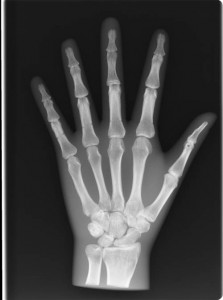The “Organization” of Law (Part 5)
By Asher Crispe: May 6, 2014: Category Inspirations, Quilt of Translations
 Beyond the general distinction into positive and negative commandments, the internal organization of the body of law breaks down further according to both form and function within the horizons of anthropocentric embodiment. In the Torah, there are 248 positive commandments and 365 negative commandments. But why those numbers? What do they relate to? How do we typify these detailed figures?
Beyond the general distinction into positive and negative commandments, the internal organization of the body of law breaks down further according to both form and function within the horizons of anthropocentric embodiment. In the Torah, there are 248 positive commandments and 365 negative commandments. But why those numbers? What do they relate to? How do we typify these detailed figures?
The most often cited correspondence links the 248 positive commandments with what are referred to as the ‘remach evarim’ or 248 limbs of the body. An ‘evar’ is not only a limb in the sense of an arm or a leg, it also alludes to organs–the very organs that organize and differentiate our inner workings and evoke a site specificity assigned to different positive legal functions. Each one does something particular to it from somewhere. They are localizable, filling the body (some might use the term ‘pleroma’ for this filling) as the integrated system that frames our internal world. Likewise, the assertions of a given positive performative speak from somewhere in that to ‘posit’ etymologically means ‘placed’ or ‘formally laid down.’
Occupying a fixed position, they inform practices which both relate to the system/body as a whole while simultaneously being semi self-contained. For instance, a liver might be transplantable if it can be cut out of one body and relocated into another. Such surgical procedures would be impossible if not for the organ’s maintaining of borders. A knife can trace it. The design is modular.
Once attached and properly healed, the new liver services the new host. Its particularity is not dissolved into the larger whole nor can the larger whole sustain itself without it. They enjoy a profound symbiosis. Laws, too, must learn to live together whereby the ‘living’ constitutes a sustainable interconnectivity without suffering from a loss of individual identity via contradiction. Moreover–as with transplanted organs–we must remain vigilant against rejection due to the incompatibility of laws uprooted from their original soil and ferried over to a foreign environment ill equipped to receive them.
In essence, we require both the ability to think of the organization of law as separate and discreet vessels or vehicles (even machines) and, at the same time, to concern ourselves with inner integration of those laws into a larger body whose connections and communications produce a network of flows or channels of exchange. Gathering together the part and the whole is no easy matter. It demands advanced multitasking ability. Our aim, therefore, is to generate a sense of jurisprudence as a kind of systems biology.
The performances are staged in a unique way with a starring body part or parts as the central actor or actors. For instance, there are commandments of the heart, the hand or the mouth. These organs may be regarded as the epicenter out from which ripple the distinctive frequencies associated with a given practice to the other parts of the body. Yet, this is only one configuration.
For the positive commandments, the more penetrating correspondence is to the skeletal system. While there can be different criteria for dividing up the bones of the body, the basic kabbalistic division is into 248. In Hebrew, the word for bone is etzem which also means ‘being’ or ‘essence’ (perhaps an ‘essential being’) which is fitting in that the bones may be thought of as the hard inner core of a person. Strip away all of the external layers which symbolize the ‘accidentals’ or non-essentialistic superadded garb of our personal stature and we are left with our minimal being. We are worn to the bone. If we were to remove those then there would be nothing left of us–no human frame. The fundamental outline of the self is accomplished with the skeletal scaffolding. In this way, our surface appearances are imbedded and supported by our essence.
There are many activities which we may or may not elect to do, yet, that which clings to our essence is ultimately inwardly motivated. Commandments that receive this kind of recognition under internal review have no real compulsion associated with their performance. They are a natural expression of who were are. Alternatively, there are behaviors that may help to flesh us out but we can live without them. They do not belong to our essence.
While we most often think of a command as having been given from without (as with an external authority bearing down upon a subordinate whereby an order is something foreign to the one receiving it), in this case, the comparison with our innermost frame of reference for self-constitution–the bones–conveys a sense of an immanent domain to the commanding force. We might say that it is the inner me telling myself that this is the real me. I am compelling myself. Far from being alien and self-estranging, this command arises from within the core of my being and reunites me with my true self. Moreover, all of my self-projections or expressions depend upon the self-informed foundation of my bones. By contrast, the skin and muscle without bone underneath are not self-supporting.
So while the 248 ‘bones’ can be depicted as 248 essential structural features to the organization of law, there still remains the question of this particular number. Rabbinic literature has adopted the practice of writing this number with three Hebrew letters (Reish-Mem-Chet which are 200, 40 and 8 respectively). These letters may be rearranged to spell rechem (Reish-Chet-Mem) which means ‘womb.’ Abstractly, a womb is a space at the center of the self that has been emptied of self in order to make room for an other. This, in a slightly more abbreviated fashion, is a ‘self-de-centering’ or interinclusion of the ‘other within the same.’ In a word, these structural features are all integral. That there are 248 indicates that every one can be found within everyone. One positive commandment logically presupposes all 248.
 We may reinforce this notion by pointing out that 248 is the numerical value of Abraham (Avraham) of whom it is said [Ezekiel 33:24] “echad haya Avraham” (“Abraham was one”). In other words, the 248 [Avraham] are entirely one. Each positive performative is held in the ‘womb’ of all the others as if to say that all of the proto-legal commandants must be empathetic to one another (rechem ‘womb’ is from the root of rachamim which translates as ‘empathy’ and ‘compassion’). They are inextricably linked and interrelated.
We may reinforce this notion by pointing out that 248 is the numerical value of Abraham (Avraham) of whom it is said [Ezekiel 33:24] “echad haya Avraham” (“Abraham was one”). In other words, the 248 [Avraham] are entirely one. Each positive performative is held in the ‘womb’ of all the others as if to say that all of the proto-legal commandants must be empathetic to one another (rechem ‘womb’ is from the root of rachamim which translates as ‘empathy’ and ‘compassion’). They are inextricably linked and interrelated.
248 also equals the expression from Genesis 1:27 “b’tzelem Elokim” (“in the image of God”). To be in the Divine image is to contain all 248 essential structural features which are tied to proper positive performance. Our true nature is to be in ‘the image of God’ which implies emulating the Divine. The Divine name used in this context is ‘Elokim’ which marks ‘God, as, or invested within, nature’ or even ha’teva [Elokim = 86 = ha’teva] (The Nature) as in the ‘essential nature.’ Riffing off this relationship, the kabbalists insist that our essential nature is to conform to the nature of nature which is a Divine image.
Part Six takes on the challenge of decoding the significance of there being 365 negative commandments.
http://www.interinclusion.org/inspirations/the-organization-of-law-part-6/
http://www.interinclusion.org/inspirations/the-organization-of-law-part-4/






















;)
;)
;)
;)
;)
;)
;)
;)
;)
;)
